The Mount Washington Cog Railway
The Mount Washington Cog Railway, the first mountain-climbing train in the country, has been delighting visitors with stunning views since 1869. Enjoy this virtual spring visit from 2016.
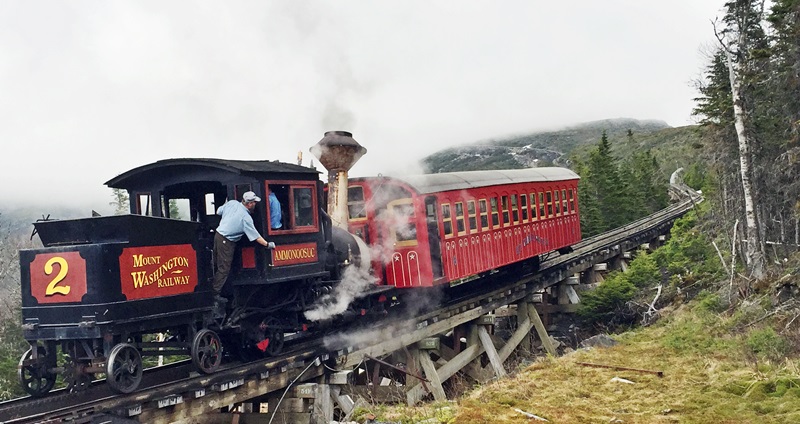
Before my destination is even in sight, I can smell it. The sulfuric smell like the world’s biggest cap gun has gone off, followed by the telltale curls of smoke and steam. I’ve just arrived at the base of the Mount Washington Cog Railway — one of New England’s most historic and scenic mountain experiences. As the world’s first mountain-climbing cog railway, “the Cog” has been carrying passengers to the 6,288-foot summit of Mount Washington (the Northeast’s highest peak) since 1869, and shows no signs of slowing down.
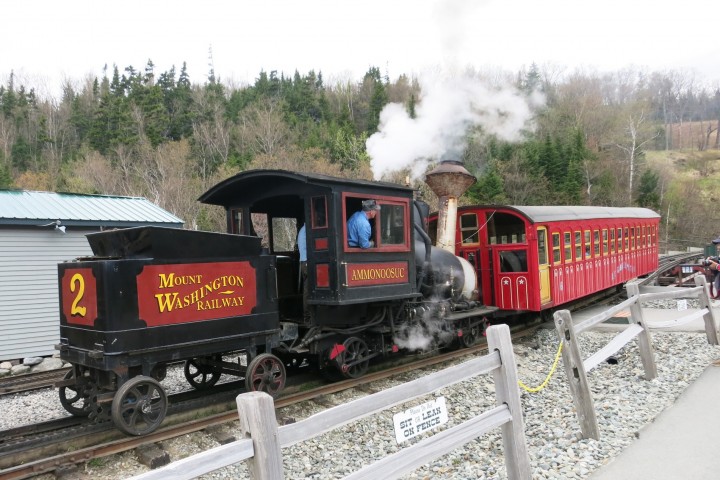
Photo Credit : Aimee Seavey
What I’m seeing and smelling is one of the Mount Washington Cog Railway’s coal-fired steam locomotives, and it’s an old-fashioned red, black, and yellow beauty, like something out of a drawing in a children’s book. I am instantly enchanted.
The day was a special one for the Cog, in coordination with New Hampshire Public Television. The two had teamed up to produce a documentary on the history of the railway (“Mount Washington Cog Railway: Climbing to the Clouds“) and I would be participating in a special ride to the top, tour of the Mount Washington Observatory, and later, a screening of the documentary at the nearby historic Omni Mount Washington Resort.
I spent a good amount of time in the White Mountains as a child, but had never ridden the Cog before, so I knew this was going to be a real treat — and it sure was.

Photo Credit : Aimee Seavey
The Marshfield Base Station just a few miles from the Omni Mount Washington Resort at Bretton Woods is a lovely destination in its own right, located 2,700-feet above sea level and with an on-site restaurant, gift shop, small museum and (free) views of the trains heading up and coming back down. Also on display is outside is Old Peppersass, the first locomotive to reach the summit of Mount Washington on July 3, 1869. The nickname is because it resembled an old pepper sauce bottle.
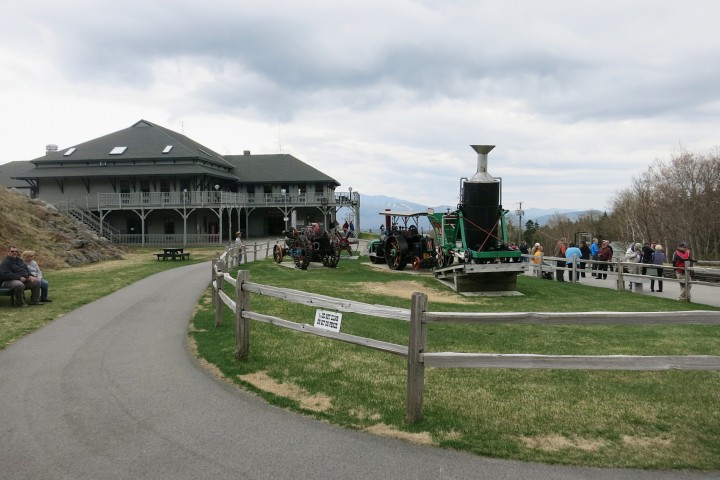
Photo Credit : Aimee Seavey
The Mount Washington Cog Railway has several trains in its fleet. Some of them, the oldest, are old-fashioned coal-fired steam locomotives. Since 2008, the Cog has also added five biodiesel locomotives, which offer a smoother, cleaner, and faster trip to the summit. The diesel trains are designed and built on-site just for the Cog. They don’t come cheap, but keeping the Cog running and thriving is worth it.
The steam locomotives use a ton of coal, and 1,000 gallons of water to get to the top, and the journey takes an hour (the diesel only about 45 minutes). They have limited runs, usually first thing in the morning, so if you’ve always wanted to experience the sights and smells (and bumps!) of steam, plan your visit accordingly!
For our adventure, we’d be going about halfway up the mountain in one of the steam trains, then unloading and hopping aboard a diesel train for the remainder of the trip.
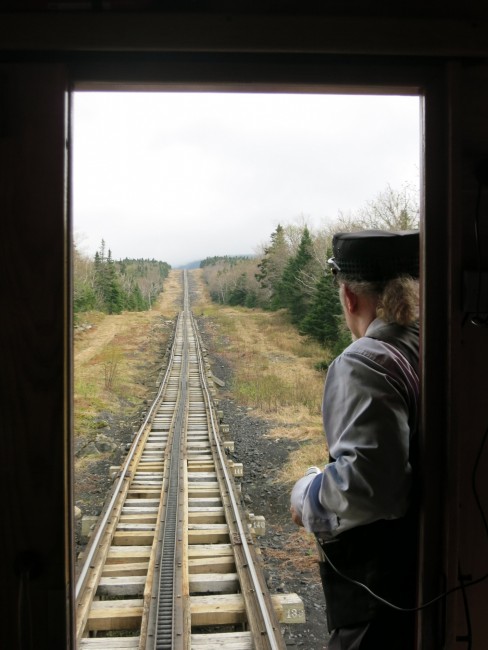
Photo Credit : Aimee Seavey
It’s hard not to feel like a kid again at the sight of a colorful steam train blowing its whistle under a plume of steam and smoke as it chugs along a winding track, especially when the surrounding landscape is as green and rolling and beautiful as the White Mountains of New Hampshire.
Those who love the Cog are indebted to its founder, Sylvester Marsh. Marsh had grown up in Campton, NH but made his fortune in Chicago’s meat-packing industry. After retiring, he returned home and came up with the idea for the railway, which was always intended for tourists, while climbing (and nearly perishing on) the mountain in 1852. Everyone thought he was crazy (you “might as well build a railway to the moon” he was told), but Marsh was undaunted. He obtained a charter to build the railway in 1858, but thanks to the Civil War, work didn’t begin until 1866. Three years later, the Cog was complete.
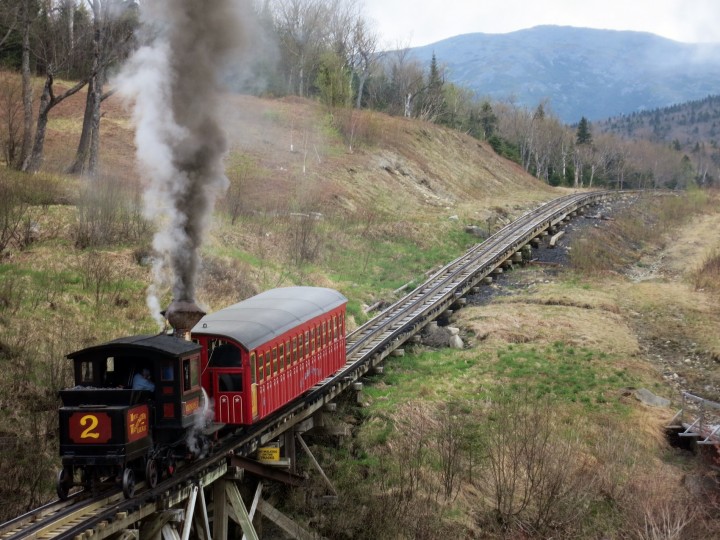
Photo Credit : Aimee Seavey
We pulled away from the station, pushed by the chugging steam locomotive (the locomotive and the coach aren’t technically “connected,” making the experience even more exciting) and the adventure began!
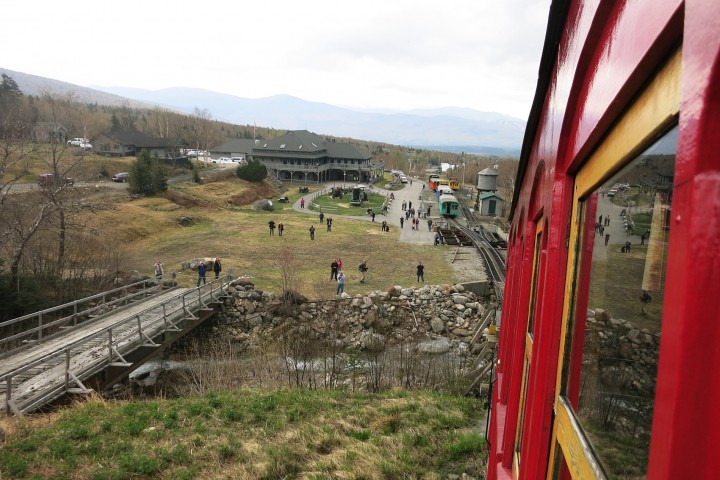
Photo Credit : Aimee Seavey
Inside the locomotive, an engineer mans the locomotive, while another shovels the coal into the flames to keep things moving. It’s a very difficult job, and the staff are the total package — hardworking, passionate, and clearly in love with their jobs. Their enthusiasm is infectious.
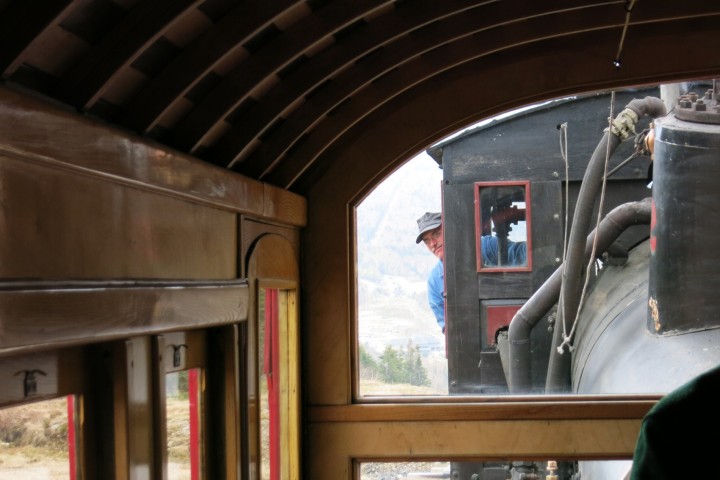
Photo Credit : Aimee Seavey
It’s hard to not spend the entire ride hanging out the window snapping photos of the mountain’s western slope (which you are both allowed and encouraged to do — but safely!), but just be sure to pull your head in when passing the the Waumbek water tank!
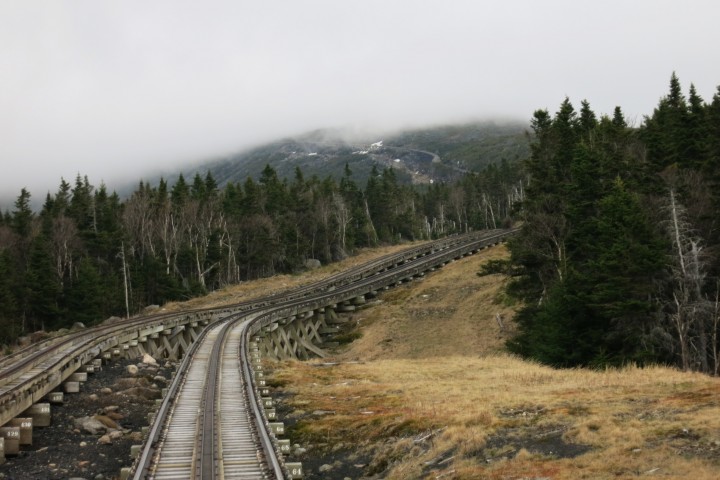
Photo Credit : Aimee Seavey
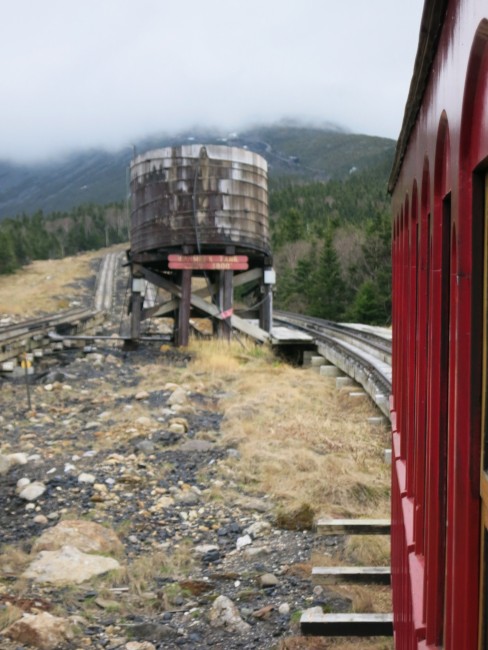
Photo Credit : Aimee Seavey
And should another train pass you on the opposite side, be sure to wave!
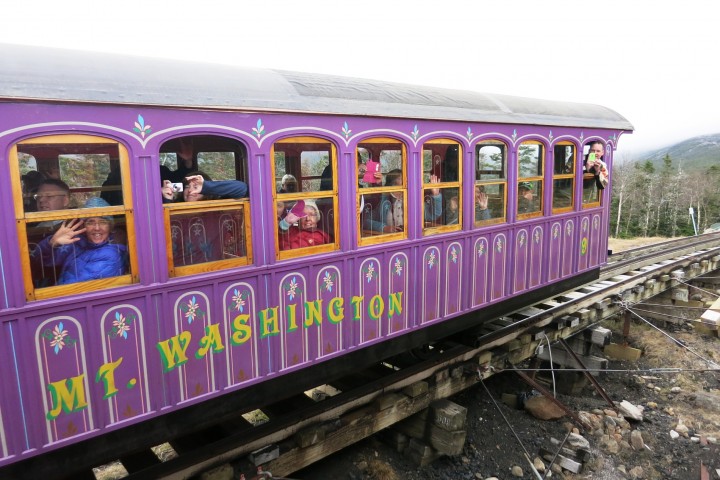
Photo Credit : Aimee Seavey
I don’t believe our stop to switch trains halfway up was typical for the Cog (this being an “event” day, things were running a bit different than usual), but the chance to get out and stand on the mountain mid-ride was a treat.

Photo Credit : Aimee Seavey
Especially when I got to see it “chug” (yes, they really do chug in the “I think I can” rhythm) back into life in a swirl of steam before departing.
Now on the diesel train that would take us to the summit, we trundled ahead towards Jacob’s Ladder.
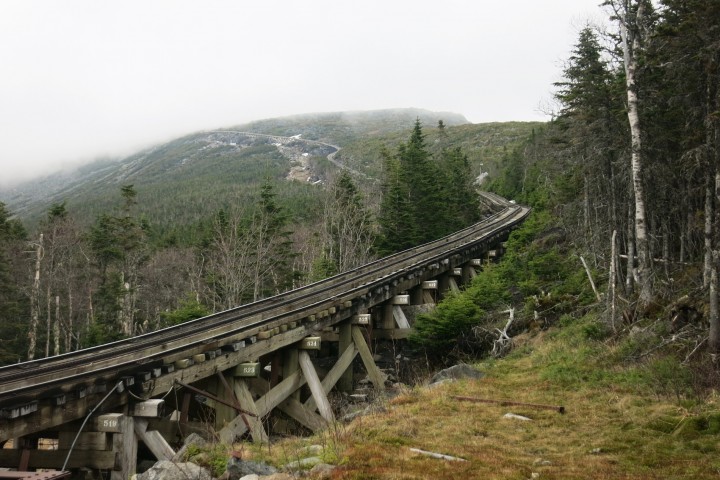
Photo Credit : Aimee Seavey
The steepest section of the Cog’s trestle, with a 37.41% grade, Jacob’s Ladder is the section of track that thrills folks the most. It makes the Cog the second steepest rack railway in the world after the Pilatus railway in Switzerland, which clocks in at 48%.
To help illustrate, here’s a photo of a steam locomotive on Jacob’s Ladder that the Mount Washington Cog Railway provided:
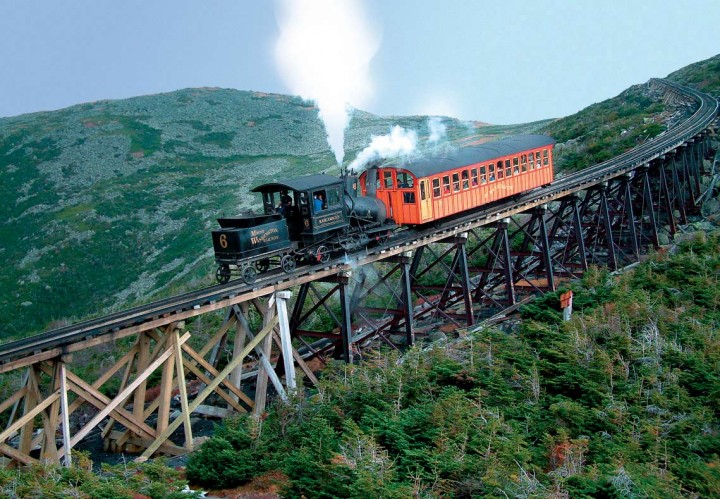
Photo Credit : Mount Washington Cog Railway
From inside the coach, however, the view doesn’t seem so nail-biting — just beautiful as far as the eye can see, even on a cloudy day.
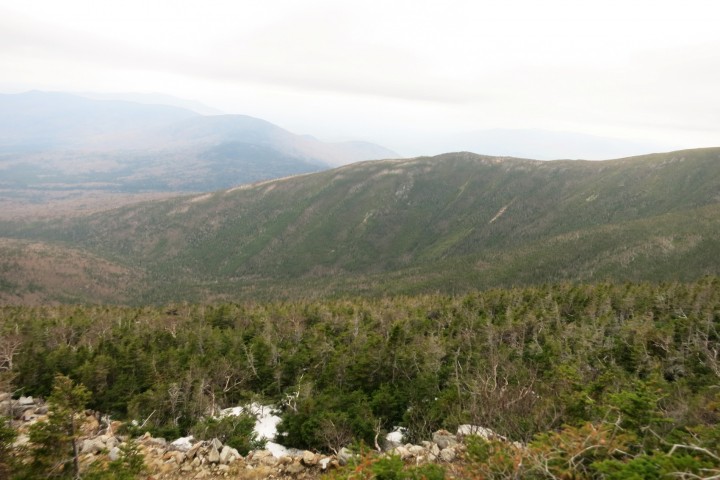
Photo Credit : Aimee Seavey
But soon, the temperature began to drop and the clouds loomed closer.

Photo Credit : Aimee Seavey
Inside the coach, as the fog swirled around us, Cog co-owner and operator Cathy Bedor kept our group entertained with Cog facts, trivia, and geographic highlights.
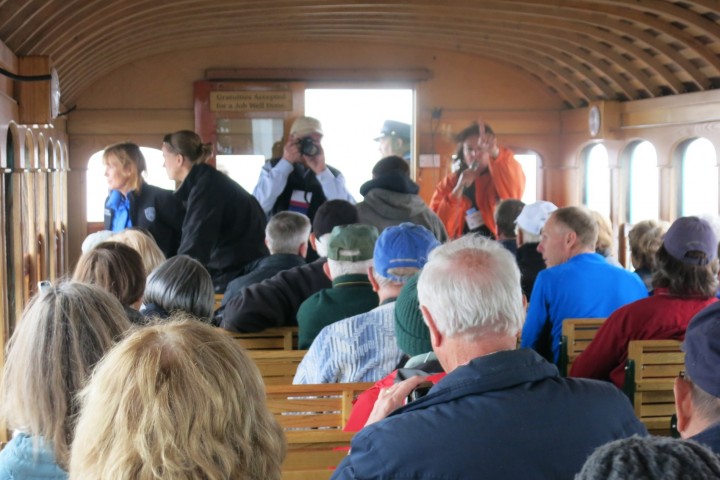
Photo Credit : Aimee Seavey
And then, we arrived at the almost-top, since the true summit is another 20 or so rocky steps up (meaning even train riders can tell friends they “hiked to the top” of Mount Washington without technically lying). The temperature had dropped a good 30 degrees from the base, and (as you can see), we weren’t just walking among the clouds, but through them.

Photo Credit : Aimee Seavey
Naturally, I couldn’t resist those kinds of bragging rights, so I made my way to the summit and asked a friendly French-speaking tourist to take my photo. Who would pass up the chance to stand on the very tip-top of New England at 6,288 feet? Not this Yankee!
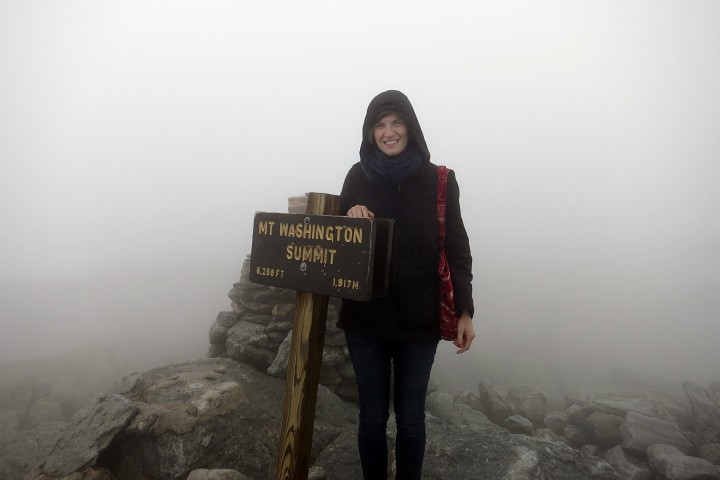
Photo Credit : Aimee Seavey
In contrast, here’s a look at the summit on a clear day:
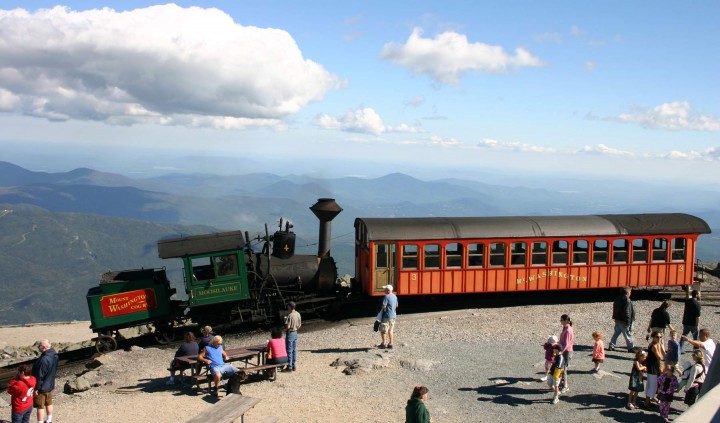
Photo Credit : Mount Washington Cog Railway
Now that’s a view!
Back inside, I took a quick tour of the Mount Washington Observatory. It was fascinating to see how the team monitors and records the mountain’s famous weather, but if you want the full story (complete with winter photos), our blog on The Mount Washington Observatory | New England’s Weather Station is a great place to learn more.
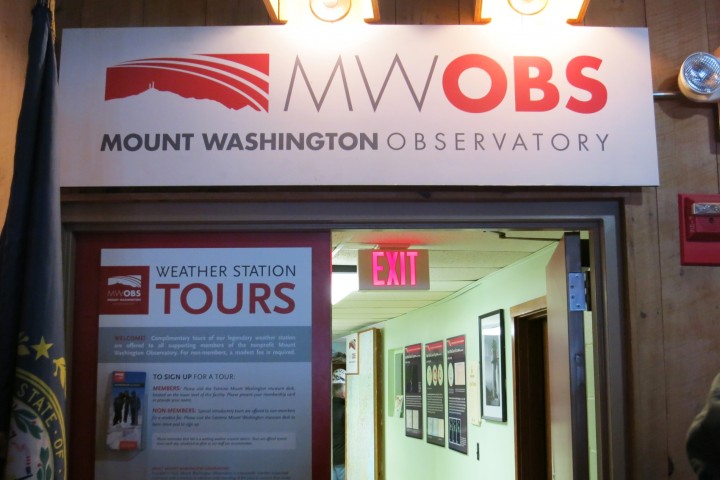
Photo Credit : Aimee Seavey
On our visit, the fog (and not the wind) was the big story.
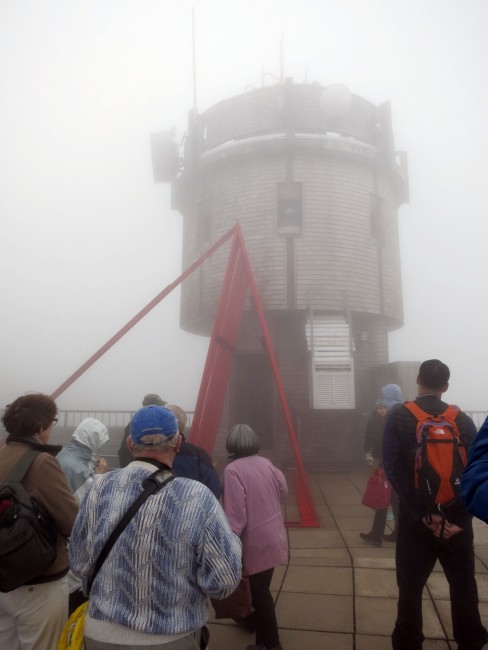
Photo Credit : Aimee Seavey
Back inside the warm and dry Sherman Adams Summit Building, I strolled past the on-site U.S. Post Office, which also sells one-way Cog tickets for hikers that want an easy trip down, before a quick zip downstairs through the Observatory museum.
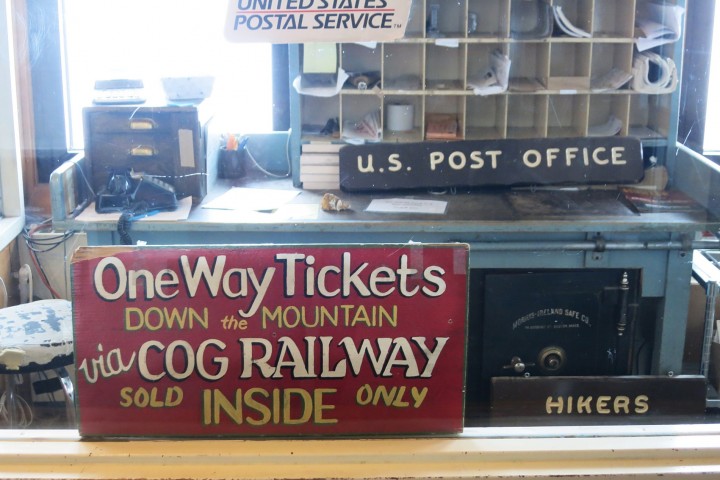
Photo Credit : Aimee Seavey
There’s also a gift shop inside, but the largest crowds are gathered in the wood-paneled cafeteria, where tourists and hikers from all over the world mingle and recharge over coffee, hot chocolate, and hot bowls of soup.
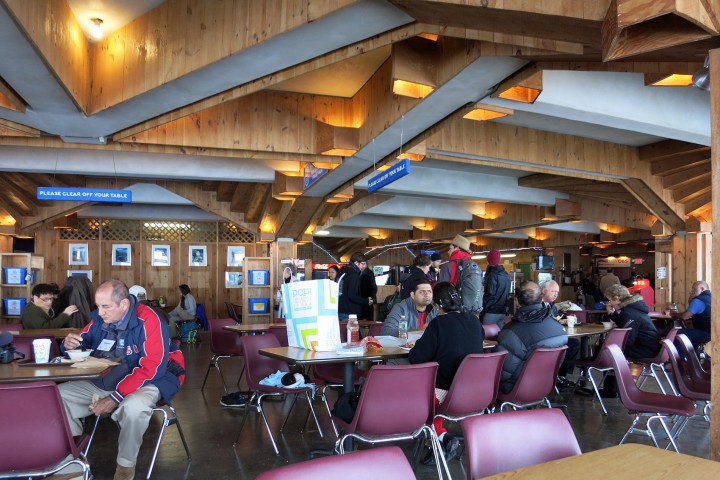
Photo Credit : Aimee Seavey
Still shivering from the sudden drop in temperature, I ordered a bowl of clam chowder and enjoyed a little people watching.

Photo Credit : Aimee Seavey
Back outside, the members of our group (which included then-New Hampshire Governor Maggie Hassan) chatted before boarding our trains for home.
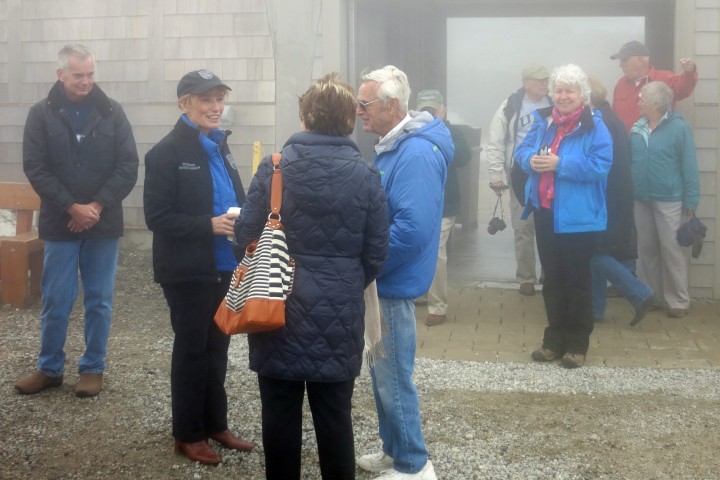
Photo Credit : Aimee Seavey
For the return trip, the chairs had helpfully been flipped around so we rode down “backwards.” This is crucial for the Jacob’s Ladder portion of the trip! It also afforded a lovely view of the ribbon of track winding behind us as we made our way back to the Base.
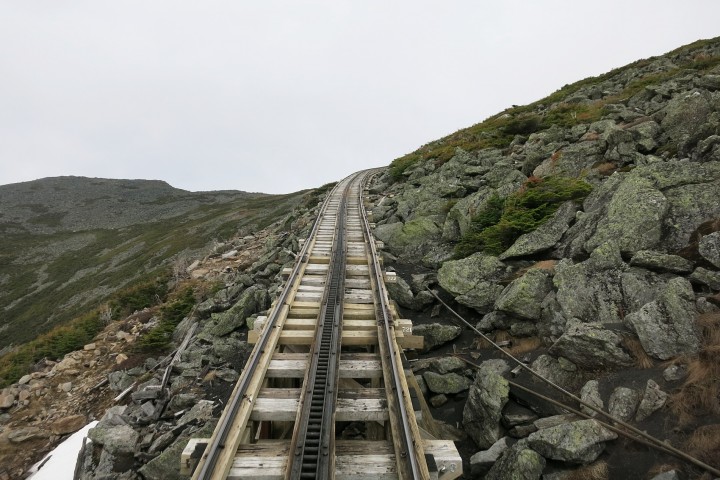
Photo Credit : Aimee Seavey
Before long we had come down out of the clouds and were nearly back to the station, if not entirely upright.
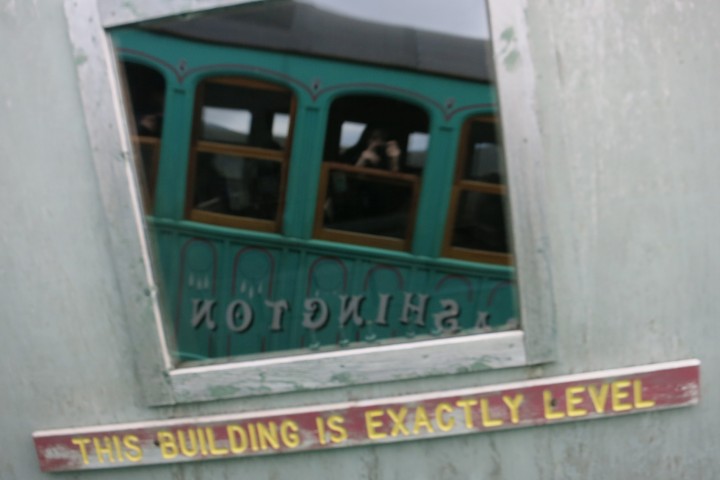
Photo Credit : Aimee Seavey
The Mount Washington Cog Railway was named a National Historic Engineering Landmark on June 26, 1976, and it really is a treasure. By climbing aboard, riders are treated to the same breathtaking thrill-ride today as the railway’s first passengers were nearly 150 years ago, and for those that keep the Cog running, that’s exactly how it’s going to stay.
So, whether you’re a fan of travel, adventure, nature, science, weather, transportation, history, trains, photography (must I go on?) — a ride on the Cog is a New England experience that’s not to be missed, since it simply cannot be replicated.
Trips on the Cog run about 3 hours (including an hour at the top) and run from late April to early December, but be sure to call or check online before making your plans. Learn more (much more!) at thecog.com.
Have you ever experienced the Mount Washington Cog Railway?
This post was first published in 2016 and has been updated.
SEE MORE:
The Mount Washington Hotel at Bretton Woods, NH | Historic Hotel Tour
The Mount Washington Observatory | New England’s Weather Station
Mount Washington Cog Railway | Yankee Classic
Aimee Tucker
Aimee Tucker is Yankee Magazine’s Home Editor and the Senior Digital Editor of NewEngland.com. A lifelong New Englander and Yankee contributor since 2010, Aimee has written columns devoted to history, foliage, retro food, and architecture, and regularly shares her experiences in New England travel, home, and gardening. Her most memorable Yankee experiences to date include meeting Stephen King, singing along to a James Taylor Fourth of July concert at Tanglewood, and taking to the skies in the Hood blimp for an open-air tour of the Massachusetts coastline.
More by Aimee Tucker

